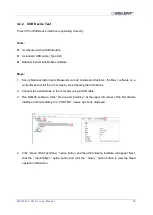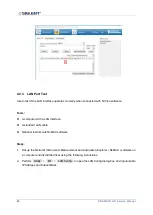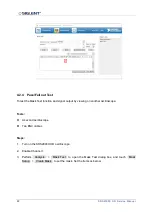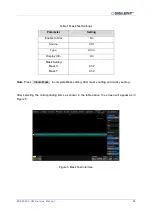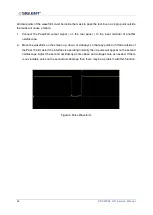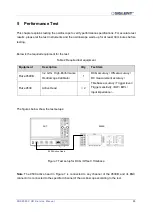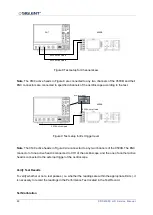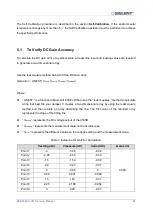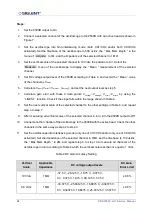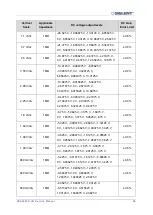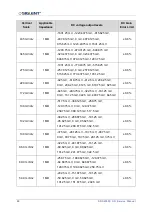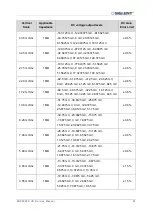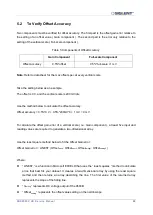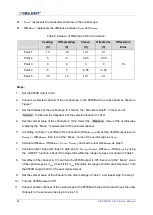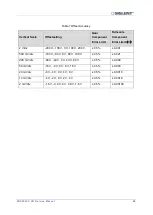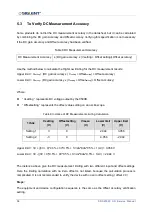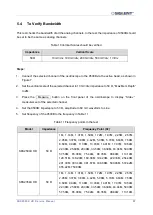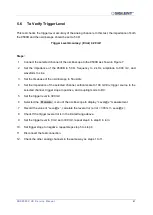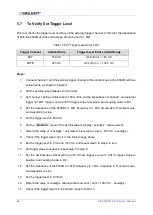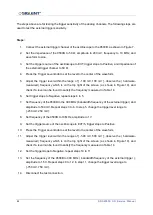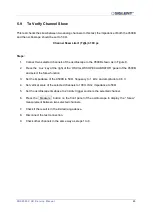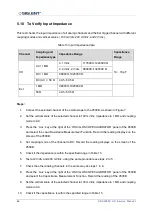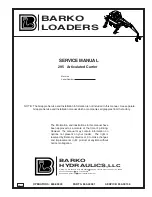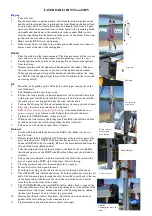
SDS2000 X HD Ser vice Manual
33
5.2
To Verify Offset Accuracy
Two components must be verified for offset accuracy. The first part is the offset gain error relative to
the setting of an offset value ( Gain component ). The second part is the error only relative to the
setting of the vertical scale ( Full-scale component ).
Table 5 Components of Offset Accuracy
Gain Component
Full-scale Component
Offset accuracy
0.5%*offset
0.5%*full-scale +1 mV
Note
: Refer to datasheet for the max offset spec at every vertical scale.
Take the setting below as an example:
The offset is 0 V, and the vertical scale is 200 mV/div.
Use the method below to calculate the offset accuracy:
Offset accuracy = 0.5%*0 V + 0.5%*200mV*8 + 1 mV = 9 mV
To calculate the offset gain error of a vertical scale ( i.e. Gain component ), at least five input and
reading values are required to generate a two-dimensional array.
Use the least square method below to fit the Offset Gain error:
Offset Gain error = LINEST ( Offset
error1
: Offset
error5
, Offset
setting1
: Offset
setting5
)
Where:
“ LINEST ” is a function in Microsoft EXCEL© that uses the “ least squares ” method to calculate
a line that best fits your dataset. It creates a two-dimensional array by using the least square
method and then returns an array describing the line. The first value of the returned array
represents the slope of the fitting line.
“ V
setting
” represents DC voltage output of the 9500B.
“ Offset
setting
” represents the offset value setting on the oscilloscope.

